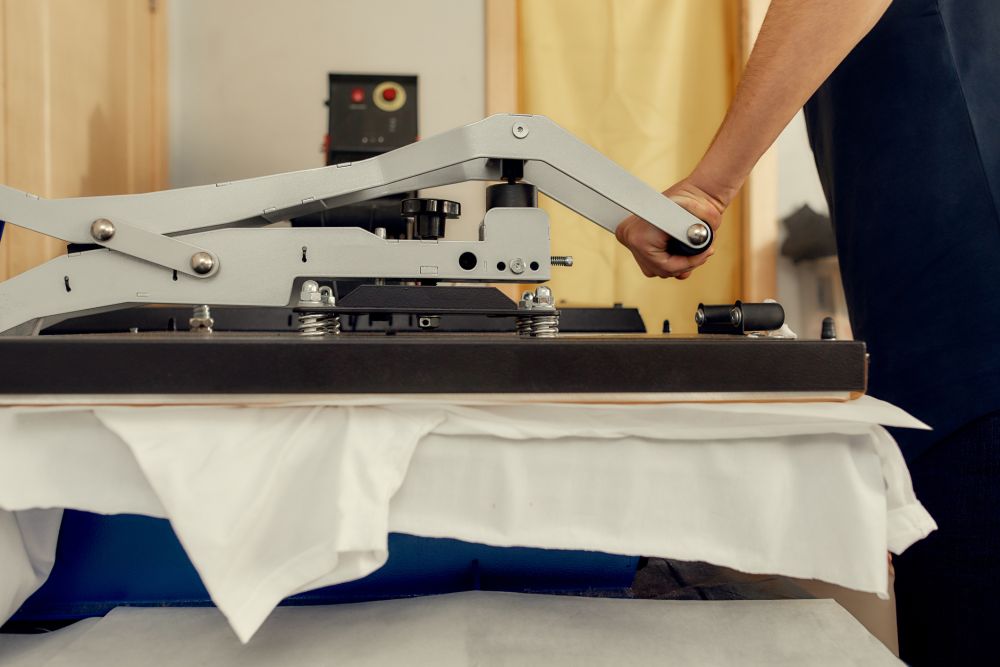Heat Transfer Printing
The image is transferred along with the white background, which is how the process works. When an image is printed on dark transfer paper, the picture that is transferred to the garment will look EXACTLY the same as it does on the paper. This includes all of the white edges and spaces in between the image. As a consequence of this, the types of images that are appropriate for use with the dark transfer paper on dark clothes are restricted by design and should either be block images or ones that can be cut around to remove the surplus of white space.

There is also the option of designing a picture with a solid backdrop or attempting to match the background of the image with the color of the shirt in order to circumvent the limitation posed by the dark transfer paper.
Both of these papers are capable of being produced with a standard inkjet printer and standard inks. They are transferred onto the substrate with the assistance of a household iron or heat press, and they can be used on a wide variety of clothes and substrates. These packs include everything you need to have successful workouts.
Components That Are Utilized In The Process Of Heat Transfer Printing
The technique of heat transfer typically involves the use of a printer, which in turn necessitates the use of specialized inks. These wax-based inks are ribbon together, and an image is created by the printer pressing the ribbon against an object, while a heat press is used on the opposite side until the ink melts off the ribbon and creates an image on the object. An image is created by the printer pressing the ribbon against an object, and an image is created by the object.
The Many Advantages of Using Heat Transfer Printing
Each type of printing brings a unique set of benefits to the table, and each printing method has its own set of advantages. Printing with a heat transfer creates graphics that are not only long-lasting but also resistant to water, water resistance, heat, and glue. In addition, the colors that were used to produce the image are of a high resolution and have a vivid and striking appearance.
The process of printing with heat transfer ink
To begin, you will need to make your design and check to see that it is saved in the right format so that you can get the most accurate and useful information from it. In order to get ready for this, make sure that your artwork has a resolution of 300 dpi, convert all text to outlines, and make use of vector-based files such as files created in Adobe Illustrator. The Funky Peach is able to help you get your graphics ready.
After you have ensured that your image is prepared, it is time to begin the process of heat transfer.
The design is going to be printed onto a specialized transfer paper that has the capability of imprinting sharp images and designs.
After loading the garment into the heat press, which stretches the garment and makes it easier for the inks to cling to the cloth, the process continues.
The piece of transfer paper that contains the design will be positioned on the area of the garment or object where you want the picture to be printed, and it will be fastened in place to ensure that it does not move.
The garment and the transfer paper will be held together by the heat press until the waxy ink melts and transfers onto the garment.
After a period of around 15 seconds, the item of clothing is removed from the heat press and placed somewhere else to cool off.
Once everything has cooled down, the transfer paper is peeled off of the garment or the object that is being used, and you will be left with a design that is crisp, full of colors, and durable.

